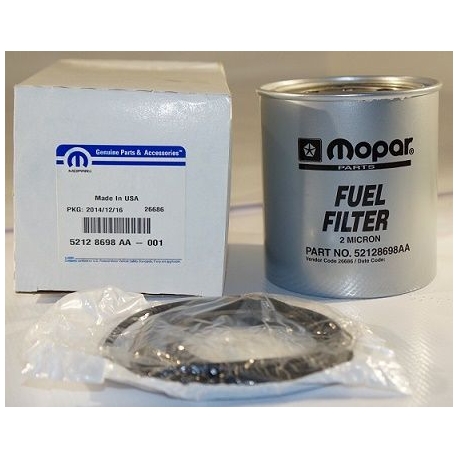Diesel fuel filters replacement play a crucial role in the efficient and reliable operation of diesel engines. They act as a barrier, preventing contaminants such as dirt, water, and debris from entering the engine’s delicate fuel injection system. These contaminants can cause a range of problems, including clogged injectors, reduced engine power, and even engine damage. Regular replacement of diesel fuel filters is essential to maintain optimal performance and longevity of your diesel-powered vehicle.
Signs of a Clogged Diesel Fuel Filter
Several indicators can signal that your diesel fuel filter may be clogged or nearing the end of its lifespan:
- Reduced Engine Power: A noticeable decrease in engine performance, characterized by sluggish acceleration or difficulty maintaining speed, could be a sign of a clogged filter.
- Rough Idle: The engine may exhibit rough idling, accompanied by shaking or vibrations.
- Difficulty Starting: Starting problems, such as the engine cranking for an extended period before starting or stalling after starting, can be attributed to a clogged filter.
- Fuel Economy Issues: A decline in fuel efficiency, resulting in lower mileage per gallon, is another common symptom.
- Check Engine Light: If the check engine light illuminates, it’s worth investigating potential issues, including a clogged fuel filter.
When to Replace Your Diesel Fuel Filter
The recommended replacement interval for Diesel Fuel Filters Replacement varies depending on the specific vehicle model, driving conditions, and fuel quality. However, as a general guideline, it’s advisable to replace the filter every 10,000 to 15,000 miles. If you frequently drive in harsh conditions, such as dusty environments or areas with poor fuel quality, more frequent replacements may be necessary.
Replacing Your Diesel Fuel Filter: A Step-by-Step Guide
While the exact procedure may vary slightly depending on your vehicle, the following steps outline the general process for replacing a diesel fuel filter:
- Gather Necessary Tools: Ensure you have the appropriate tools, including a socket wrench or adjustable wrench, a filter removal tool (if necessary), and a clean container to catch any spilled fuel.
- Locate the Fuel Filter: Consult your vehicle’s owner’s manual to determine the location of the fuel filter. It’s typically found near the engine or under the vehicle.
- Disconnect the Fuel Lines: Carefully disconnect the fuel lines leading to and from the filter. Be cautious to avoid spilling fuel.
- Loosen and Remove the Filter: Use the appropriate wrench to loosen and remove the filter from its mounting bracket. The filter may be secured with a clamp or a threaded connection.
- Clean the Mounting Surface: Wipe down the mounting surface to remove any dirt or debris.
- Install the New Filter: Carefully align the new filter with the mounting bracket and tighten it securely, following the manufacturer’s specifications.
- Reconnect the Fuel Lines: Reconnect the fuel lines to the new filter, ensuring they are properly secured.
- Bleed the Fuel System: To remove any air trapped in the fuel system, turn the ignition key to the “on” position for a few seconds without starting the engine. Repeat this process several times until fuel flows freely from the filter.
- Start the Engine: Once the fuel system is bled, start the engine and let it idle for a few minutes to allow the fuel to circulate. Also read it
Professional Assistance: If you’re unsure about replacing the diesel fuel filter yourself, it’s always recommended to seek the assistance of a qualified mechanic. They have the expertise and tools to ensure the job is done correctly.
Conclusion
Regular replacement of your diesel fuel filter is essential for maintaining the optimal performance, fuel efficiency, and longevity of your diesel-powered vehicle. By following the guidelines outlined in this guide, you can ensure that your diesel engine operates smoothly and reliably for many years to come.
FAQs About Diesel Fuel Filter Replacement
1. How often should I replace my diesel fuel filter?
- The recommended replacement interval varies depending on your vehicle, driving conditions, and fuel quality. Generally, it’s advisable to replace the filter every 10,000 to 15,000 miles.
2. What are the signs of a clogged diesel fuel filter?
- Reduced engine power, rough idle, difficulty starting, decreased fuel economy, and a check engine light can all indicate a clogged filter.
3. Can I replace the diesel fuel filter myself?
- While it’s possible to replace the filter yourself, it’s recommended to consult your vehicle’s owner’s manual and have the necessary tools and knowledge. If you’re unsure, seek the assistance of a qualified mechanic.
4. What tools do I need to replace a diesel fuel filter?
- You’ll typically need a socket wrench or adjustable wrench, a filter removal tool (if necessary), and a clean container to catch spilled fuel.
5. Is it necessary to bleed the fuel system after replacing the filter?
- Yes, it’s important to bleed the fuel system to remove any air trapped in the lines. This can be done by turning the ignition key to the “on” position for a few seconds without starting the engine. Repeat this process until fuel flows freely from the filter.
